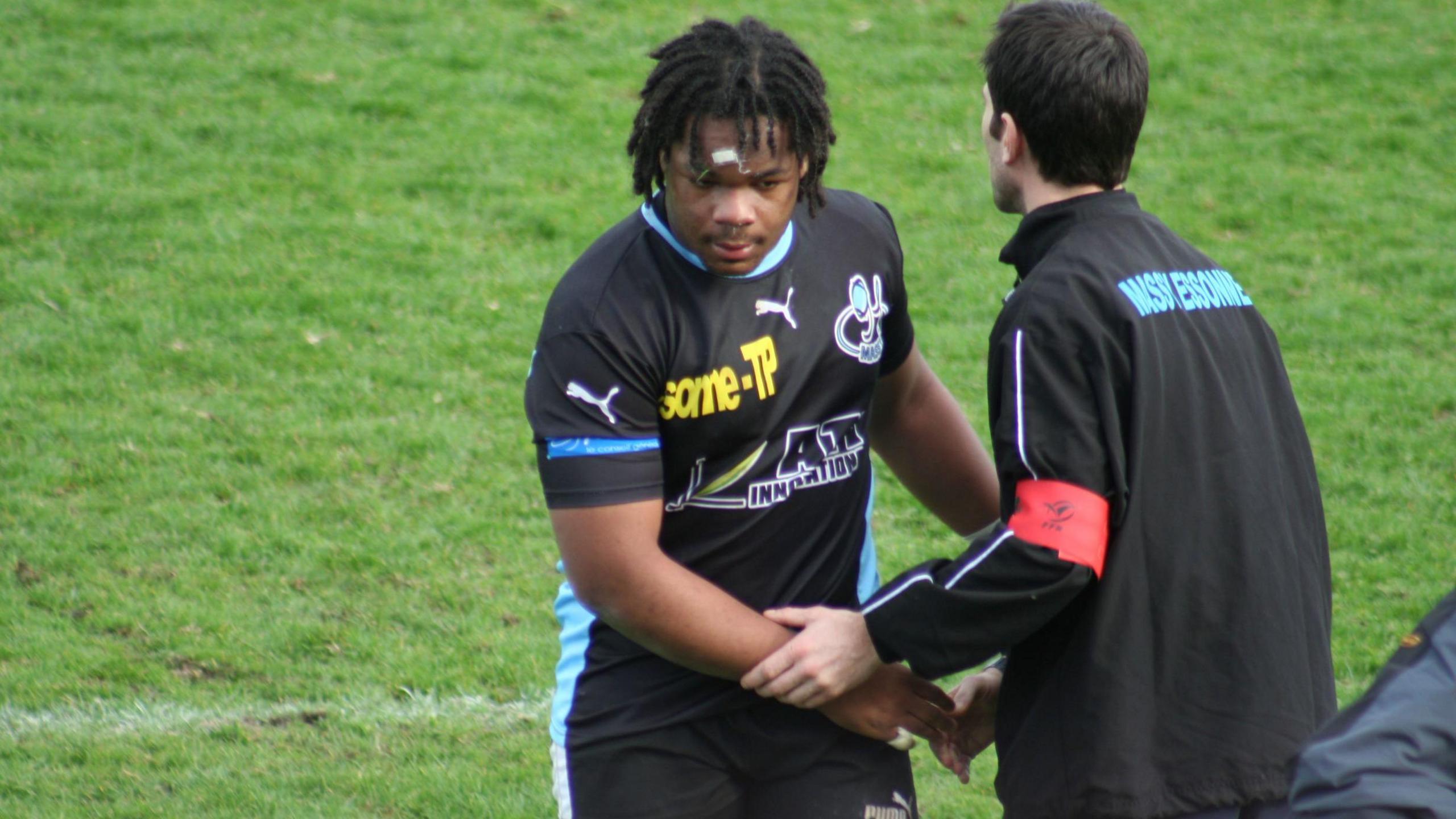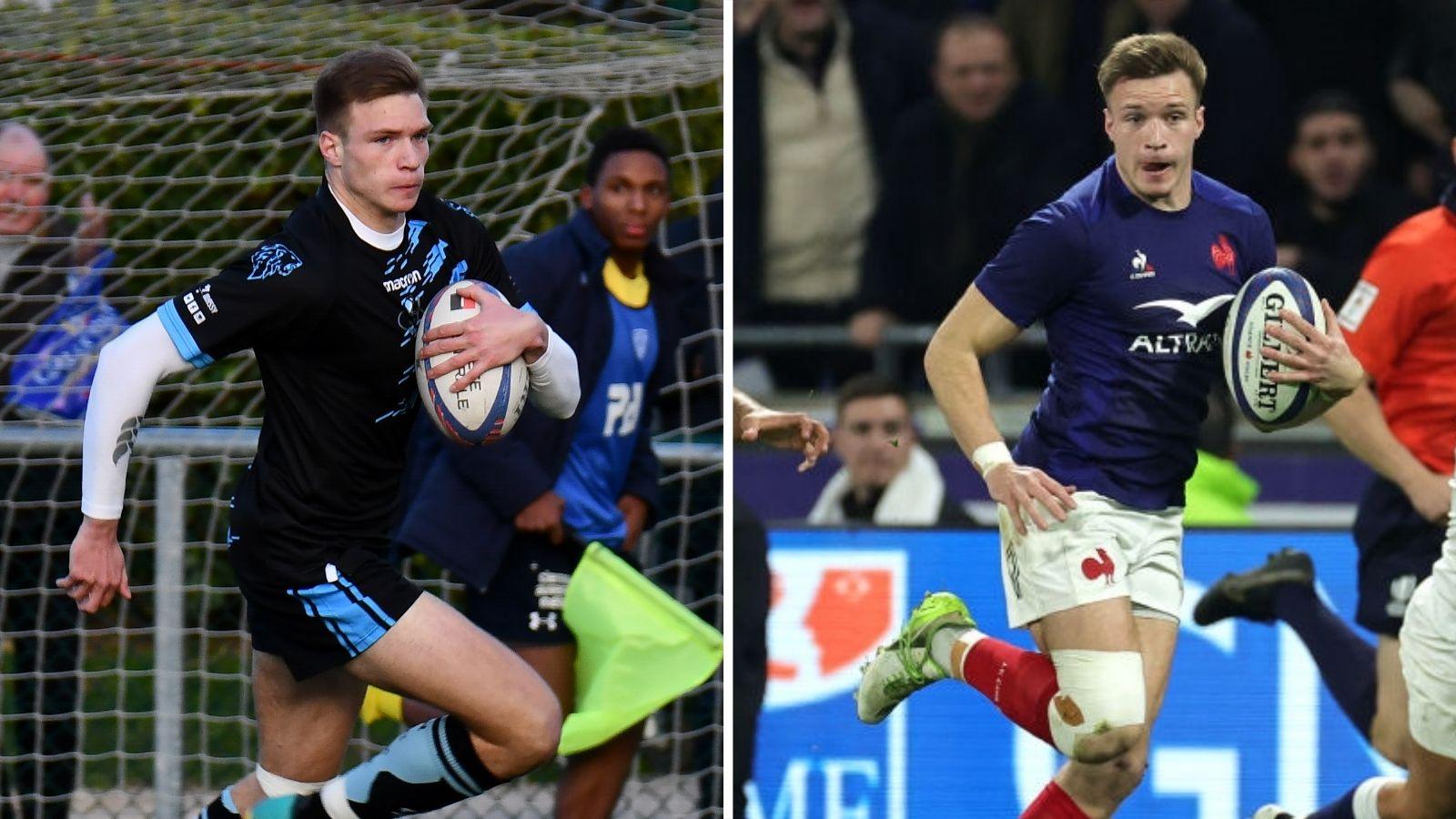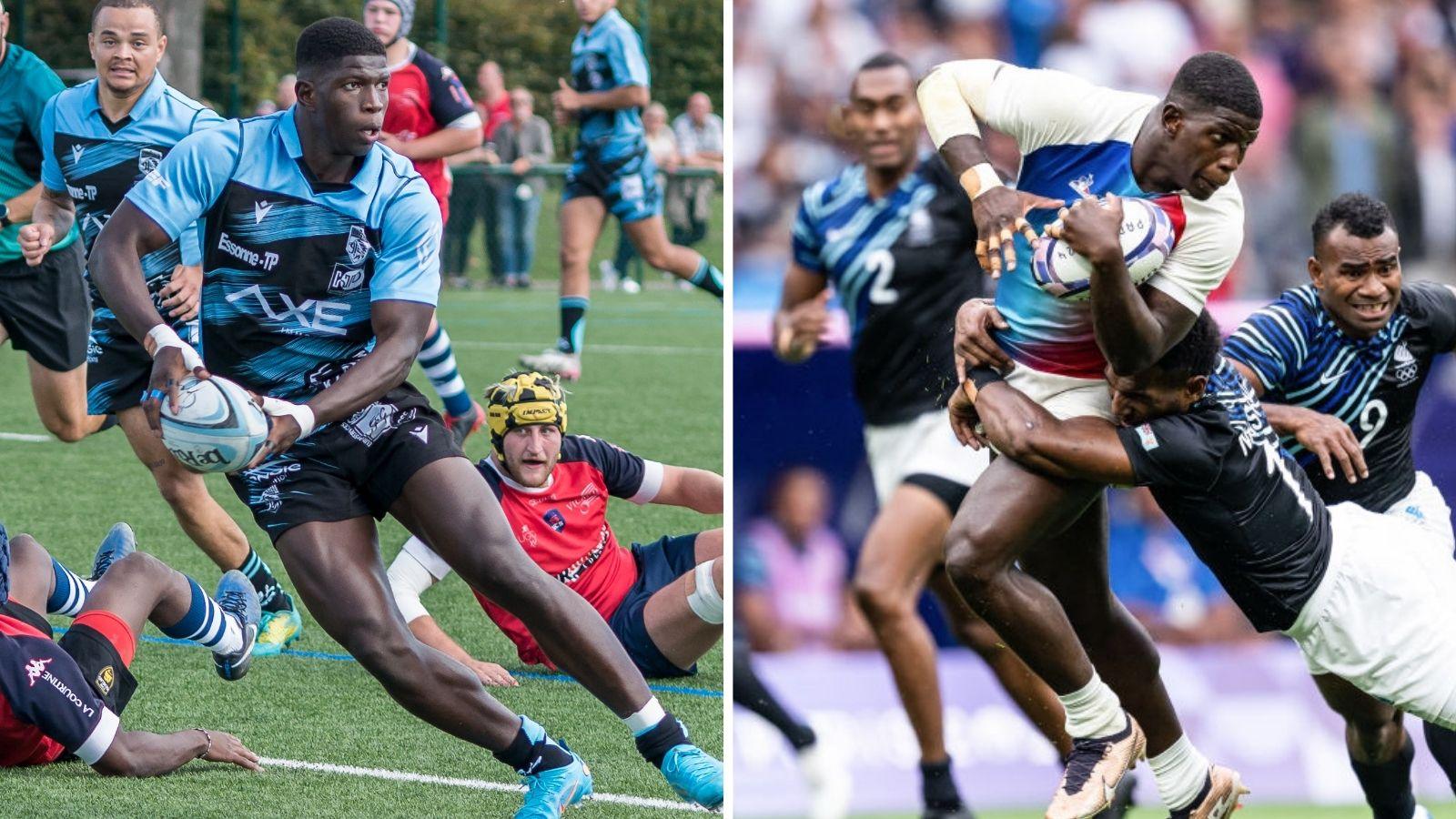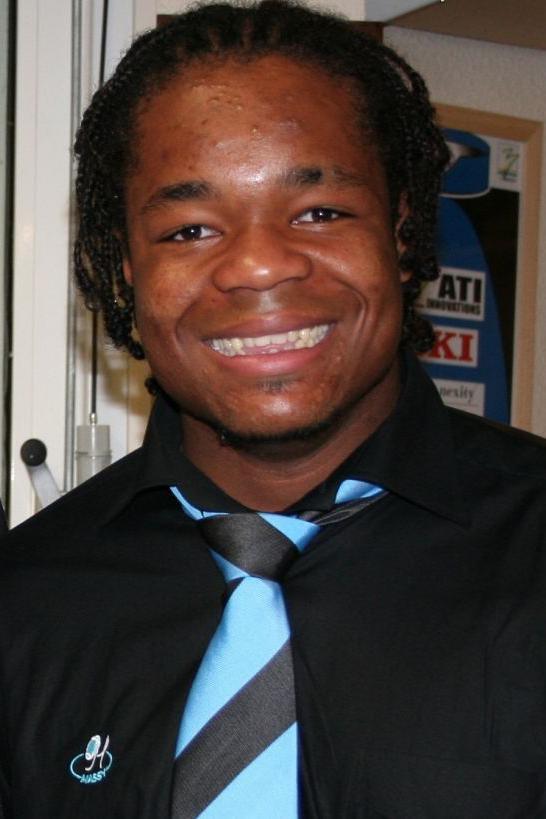Men’s Six Nations: England v France
Date: Saturday, 8 February Kick-off: 16:45 GMT Venue: Allianz Stadium, Twickenham
Coverage: Live on BBC Radio 5 Live and BBC Sounds, with live text commentary on the BBC Sport website
Mathieu Bastareaud had a choice of socks.
He could have worn those of his childhood club Creteil. He could have worn Toulon’s colours, with whom he won European and French titles. Perhaps Stade Francais, where he first broke through, would be best.
But picked for the Barbarians in 2019, he opted instead to pair their famous shirt with Massy’s sky-blue socks.
“I am very proud to be part of this club,” he tells BBC Sport. “It is perhaps strange because I didn’t stay a lot of time, just three years from when I was 15.
“But I wouldn’t have had the same career if I hadn’t gone to Massy.”
And France certainly wouldn’t have the same team.

Massy isn’t Paris.
Not for the tourists, who stay central in search of golden-hour boulevards, bakeries and Breton stripes.
Not for the locals either, who distance themselves from the city’s pretensions by describing themselves as Massicois, rather than Parisians.
But, in reality, they are too close to be anything but.
A 40-minute train ride from the sights, Massy is one of the banlieues that ring the French capital.
A satellite limbo town, it is part of Paris’ sprawl, but left out of the sell made around the world.
What is for certain in these suburbs, though, is football’s dominance.
As you walk up from the station, through Massy’s gauntlet of squat apartment blocks, you pass youngsters wearing kits from around the world – Arsenal, Juventus and Real Madrid. The letters P, S and G are spray-painted on to spare surfaces.
It is not surprising. Paris is perhaps the most productive city in the world in forming football talent.
But Paris is not entirely pre-occupied by football.
One rugby club in particular still holds out.
Massy, formed in 1971, are in the third tier, attracting crowds of around 2,500 to a compact stadium. Their impact, though, is oversized.
In the clubhouse, small, framed photos line the walls. The subject of each wears a blue France shirt. Bastareaud stares down from one.
Cameron Woki – a star of the 2022 Grand Slam team – is two spots along. Sekou Macalou, part of the squad at the 2023 Rugby World Cup, is there. Yacouba Camara, who played at Japan 2019, is too. Jordan Joseph, named as the best young player in the world in 2018 and now a fully-fledged international, is another.
It is an extraordinary wellspring of talent. Not least for its location.
In the 1970s, the French national team was made up almost entirely of players south of the Loire River, drawing on the sport’s small-town heartlands.
By the 1990s, that watershed was less distinct.
Jimmy Marlu, a product of Massy, was one of the first Parisians to break into the France team. Serge Betsen, also born and brought up in the capital, was of the same era.
Since the turn of the century, though, the trickle has grown to a torrent, with around 50 Parisian players, the vast majority with family backgrounds outside mainland France, having represented France’s men’s team.
France have not picked a team without a player trained at Massy for the past five years.
More than 200 players have come from the club to represent their country at age-grade, sevens and senior level, both men’s and women’s.
Leo Barre is one of the latest.
The 22-year-old full-back, who scored a try in last year’s 33-31 win over England, comes from the wealthy Versailles area, but would make the 30-minute trip to Massy as a 12-year-old, drawn by its successful youth scheme and values.
“It was incredible to arrive at the club like this and see the number of international players that have come through it,” he says. “But also to see the atmosphere in the dressing room. There was no difference – whatever colour, origin, or social class, we were all the same.
“We were all playing for the same shirt, for Massy.”

The club’s success in unearthing this seam of talent stems from a simple philosophy: they make it as easy as possible for youngsters to join and as hard as possible to leave.
Bruno Ghiringhelli arrived as a 16-year-old prospect, progressed to the senior team and is now the club’s sporting director.
“Massy was one of the first clubs to have this big outreach programme,” he explains.
“We go into the neighbourhoods and present the sport to those who have never played it or heard of it.
“Often it is about convincing the parents without any background in rugby.”
Massy make a persuasive case.
The club runs a network of minibuses so youngsters aren’t dependent on parents or public transport to make it to training.
For parents who do accompany their kids, Massy provides an area where they can “work from clubhouse”. Meals are cooked on site for young players.
Bastareaud remembers how members of staff would let him stay over at their flats on the night before away games to make sure he didn’t miss the morning bus.
“When you need something, they always try to find something to help you,” he adds.
The club puts an emphasis on education, with tuition offered and grades monitored, and professional opportunities, through placements with club sponsors.
Still, Ghiringhelli admits it is not easy. “Girls, social media, laziness,” he lists as the distractions that can lure away even the most promising prospects.
Andy Timo was one of those he had to work hard to keep on track.
Ghiringhelli would personally go to Timo’s house to coax him to training when he wavered during his teenage years.
Last summer, aged 20, Timo won Olympic gold alongside Antoine Dupont. This season he is part of Stade Francais’ first-team squad.
“It is incomparable, truly a family club,” says Timo of Massy.
“It really helps children and young people with their lives outside of rugby.
“In Massy you could almost burn down a house and they would help you back on the right path – that is why it is the best club in the world.”

There are, of course, other factors.
Stade Francais and Racing 92 – Paris’ two top-flight clubs – rose from the lower leagues around the turn of the millennium thanks to big-money benefactors.
They now compete with Massy for Paris’ young talent and offer a visible route to the top that doesn’t involve leaving the city.
The success of a multicultural French football team – celebrated under the slogan Black, blanc, beur – at a home World Cup in 1998, also shifted conceptions of how the country could be represented.
Not always far though.
On away trips, Massy’s young players and their officials have faced racism of varying overtness.
It followed Bastareaud, who was born in the French overseas department of Guadeloupe, further.
When he was first selected for France in 2009, coach Marc Lievremont was sent hate mail.
“A black person from the Paris banlieue – people were not used to seeing that. When you have something new you are shocked sometimes and don’t know how to deal with it,” says Bastareaud.
“At the start I didn’t sing the national anthem, it was too emotional, I preferred to focus, and they said I didn’t sing because I didn’t feel French. That was racist. I am French.
“But in France and when you change something, it is terrible every time!”
Barre, who like Timo now plays for Stade Francais, says Paris’ players have changed more than the look of France’s team.
He uses the term ‘grinta’ to sum up a particularly Parisian mindset.
It has no direct English equivalent, but conveys a tenacity, ferocity and determination that past French sides have perhaps lacked.
“The way that Paris players play – it is about all coming together from different backgrounds, some struggling, not all easy, all different stories, but wanting to give their all for the team,” Barre says.
“It is inspiring.”
Paris is now a permanent part of the France team.
“There is a revolution,” Ghiringhelli says.
“Fifteen or 20 years ago, people would just play football – now it is changing.
“We definitely have not reached the maximum either. It has been developed very quickly and well, but there are still lots of regions that we haven’t managed to get in contact with.
“Maybe we are only reaching 50% of Paris’ potential talent.”
Timo agrees. “There is a lot of talent out there, many more kids who could be players like me,” he says.
Bastareaud is now team manager at Toulon. Every time he returns from Massy, officials at the club, located on France’s southern Mediterranean coast, jokingly ask him whether he has brought any prospects with him.
After a recent match between Toulon and La Rochelle, the opposition’s 18-year-old number eight Lucas Andjisseramatchi approached Bastareaud and asked politely for a selfie.
Andjisseramatchi, it turned out, was yet another product of Paris and Massy. He wanted to send the picture to their mutual friend Ghiringhelli as a celebration of the roots all three share.
It is those connections that Bastareaud values most.
Asked for his favourite Massy memory, he doesn’t choose anything from the pitch. Or the time he was called up by France while still playing in the third tier. He takes the bus instead, the one he would sleep over at a coach’s house to catch.
“My best memory is the long away trips,” he says. “It would be maybe 10 hours on the bus. Back then we didn’t have social media or iPads. We just talked, loved, fought and had fun with our friends. Those connections – that was the best memory.”
It has taken some time, but France are now making the same journey.

Related topics



